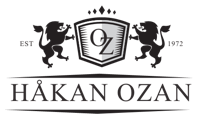
Some existing assessment models
There are several relevant and interesting innovation assessment models out there. Most of them come with a complete methodology including consultancy support and a delivery model. Just to mention a few I can highlight IMP3rove (in which I am certified), which was one of the first assessment models, originally backed by the European Commission and managed by AT Kearney. It uses a set of predefined questions as a way to analyze organizations’ maturity based on an innovation management framework. I should also highlight InnoSurvey (in which I am also certified) managed by Innovation 360 Group, which is a bit of a rising star in the assessment world. It builds on a more general management framework, but comes with a complete methodology including ways to develop leadership styles, etc. Then if you wish to align your organization to the ISO standard for Innovation Management System (ISO 56002), you have the KPMG ISO Innovation Program methodology, which is very thorough and compares you to international best practices and the ISO framework and even provides services to support the transformation.

So what’s the point?
So why spend a lot of time and money on finding out your current maturity level, as you’re going to move away from it anyway? Well, if you have ever found yourself in the Tokyo subway, looking at the map of the subway system, not knowing at what station you are, then you have faced a similar transportation problem. It reflects the issue of getting from point A to point B when not knowing one of them. Even if you find your target station it would still be impossible to navigate your way to it if you had no point of departure. The same goes when setting a strategic direction for your organization. You need to have a current position in order to be able to transition yourself accurately to your future target position. Thus the value of using a valid assessment model to map out your current state as accurately as possible, because it will be the starting point of your transformation. The purpose of an assessment is not for you to find out what you are doing well, it is to provide you with a framework for validated development of your innovation management system.
An assessment is not a one-time activity
Once you have defined what you have and what you lack in terms of good practices in say idea management, then you can define your ambitions and concretize them into goals and objectives. Suddenly you have a starting point, a target point, and then you can describe the activities needed in order to transfer your organization to the new destination.
But the journey doesn’t stop there, because to verify that you are moving along the intended path, you need to regularly re-measure your status using the same (or at least a similar) methodology. So the assessment model you choose will come back into play on a regular basis, hence the importance of having chosen a solid and relevant model for your organization and not just any random model. So the innovation assessment model you choose will stay with you for years and it will influence your innovation strategy and thus your operating model, hence the importance of cherry-picking your model and not rushing to it.






Be the first to comment